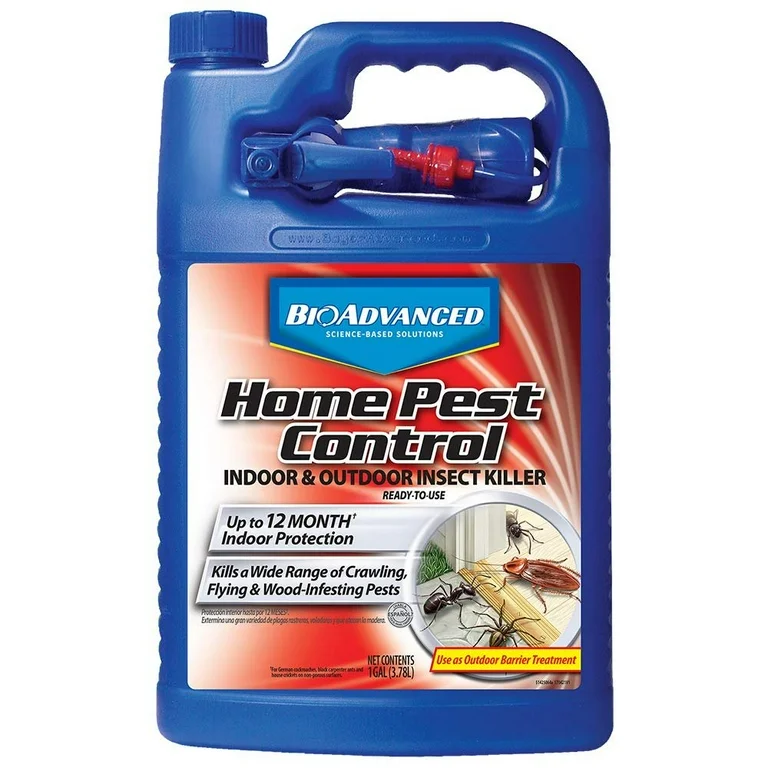Bed Insect Treatment Malfunction: Contrasting Chemical Vs. Non-Chemical Solutions
In the world of pest control, especially when dealing with the consistent issue of bed bugs, the option in between chemical and non-chemical therapy services can be a crucial one. Both methods supply distinct advantages and downsides, influencing factors such as effectiveness, security considerations, and general expense. By examining the nuanced details of each approach, a more clear understanding of which course to pursue in attending to a bed bug invasion can be obtained.
Performance of Chemical Therapies
Chemical therapies for bed pest problems have actually been widely acknowledged for their quick and potent effectiveness in getting rid of these parasites. When considering the performance of chemical therapies, it is essential to understand that they can give a quick and comprehensive service to a bed insect trouble. Professional pest control men often count on pesticides to target bed bugs at numerous stages of their life cycle, consisting of adults, fairies, and eggs. These chemicals usually work by interfering with the bed bugs' worried system, leading to paralysis and eventual fatality.
Additionally, chemical therapies have the benefit of offering recurring results, suggesting that they can proceed to eliminate bed bugs also after the first application. This recurring activity is specifically useful in combating any potential re-infestations. In addition, the fast action of chemical treatments can bring alleviation to individuals facing serious bed insect infestations, allowing them to regain control of their home promptly.
Safety Worry About Chemical Solutions
One important element that needs careful consideration when using chemical solutions for bed pest therapy is making sure the security of occupants and the setting. Direct exposure to certain chemicals made use of in bed bug therapies can lead to respiratory issues, skin irritation, or various other adverse reactions, specifically in people with pre-existing problems or sensitivities.
Moreover, the environmental influence of chemical services is an additional considerable consideration. Some pesticides used in bed pest therapies may be hazardous to beneficial bugs, wildlife, and ecosystems if they leach right into the dirt or water systems. It is vital to utilize chemical therapies judiciously, complying with safety standards, and considering less toxic alternatives to minimize these threats and make certain the reliable and secure administration of bed insect problems.
Benefits of Non-Chemical Approaches
Considering the potential security issues and ecological impact connected with chemical options for bed insect therapy, checking out non-chemical approaches offers an appealing choice with several unique benefits. Non-chemical approaches offer a much safer choice for households, specifically those with pets, youngsters, or individuals conscious extreme chemicals. These strategies remove the threats of direct exposure to harmful materials, minimizing the capacity for damaging health and wellness results. Additionally, non-chemical therapies are eco-friendly, as they do not add to air or water contamination, making them a lasting option for pest control.
Additionally, non-chemical services can be efficient in targeting bed pests, consisting of hard-to-reach locations where chemical treatments may not permeate - A1 pest control services charlotte. Techniques such as warmth therapy, vacuuming, vapor cleansing, and cushion coverings provide detailed eradication without the use Learn More Here of hazardous chemicals.
Limitations of Non-Chemical Treatments

Furthermore, non-chemical therapies typically call for several applications to accomplish successful eradication. This can be taxing and might not always ensure complete removal of all bed insects and their eggs, specifically in covert or hard-to-reach places.
In addition, the success of non-chemical treatments greatly counts on correct execution and thoroughness, which can be challenging for people without professional knowledge. Insufficient application of non-chemical methods might lead to insufficient elimination, causing persistent infestations and the demand for additional treatments.
Consequently, while non-chemical treatments have their advantages, it is vital to recognize these constraints and consider them when determining the most efficient strategy for managing bed pest problems.
Expense Comparison: Chemical Vs. Non-Chemical Options
Provided the constraints associated with non-chemical treatments, a crucial facet to assess in the context of bed pest management is the expense contrast in between chemical and non-chemical alternatives. In comparison, non-chemical treatments like heat treatment or steam can be extra expensive, with costs varying from $1,000 to $6,000 for an entire home. While the first expense of chemical therapies may seem lower, use this link numerous therapies might be needed to fully eliminate the infestation, potentially increasing the overall cost.
Conclusion

Taking into consideration the prospective security issues and ecological effect associated with chemical remedies for bed pest therapy, checking out non-chemical methods presents an appealing choice with several distinctive advantages.Offered the constraints linked with non-chemical treatments, a crucial aspect to review in the context of bed bug monitoring is the expense contrast between chemical and non-chemical options. In comparison, non-chemical therapies like warm therapy or steam can be much more pricey, with expenses ranging from $1,000 to $6,000 for an entire home. While the preliminary expense of chemical treatments may appear reduced, several treatments might be called for to completely eradicate the invasion, potentially boosting the overall expense.In conclusion, when contrasting chemical and bed bug eradication non-chemical bed insect treatment choices, it is crucial to take into consideration efficiency, safety, advantages, limitations, and price.